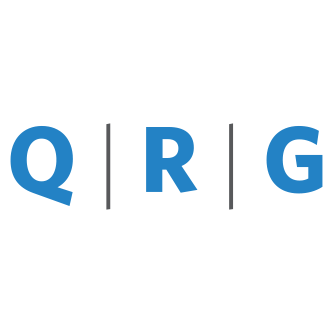Over the past three years, Envestnet's Quantitative Portfolios (QPs) offering has grown by 40 percent annually in accounts and advisors. According to Cerulli, total direct index industry assets were $434 billion at the end of 2022, and they expect direct index assets to grow at a 12% clip over the next four years – outpacing the growth of mutual funds and ETFs over that same period.1 In this blog series, industry experts from our quantitative asset management unit, QRG Capital Management, Inc., will share insights designed to help advisors customize their clients’ portfolios to meet a variety of needs.
Another way to use direct indexing
Portfolio construction is a critical aspect of achieving a client’s investment objectives, where the balance between risk and return is continually optimized. One increasingly popular strategy for achieving this balance is the ActivePassive approach – often referred to as core-satellite investing - a hybrid investment method that combines passive and active strategies. Direct indexing, which allows investors to customize their portfolio by holding the underlying individual securities of an index rather than a traditional index fund or ETF, has emerged as a helpful tool in this strategy. Let’s explore how direct indexing can be effectively used within the active-passive portfolio construction approach to enhance personalization and tax efficiency, and better achieve client investment objectives.
Understanding ActivePassive portfolio construction
The ActivePassive approach divides an investment portfolio into two main components:
- Passive portfolio: The passive, or core, portion serves as the foundation of the portfolio and typically consists of passively managed investments, often tracking a broad-based benchmark index. These investments are designed to match the risk and return characteristics of the overall market or a specific benchmark. The goal is to achieve index-like returns and volatility with low cost, providing clients with the desired asset class exposure. Passive strategies are often used in highly efficient asset classes where active managers typically underperform the benchmark, such as US large cap core.
- Active investments: The active, or satellite, portion is where active investment decisions come into play. Active investments are used to complement the passive portion by targeting specific asset classes that may be less efficient, and in which active managers have historically demonstrated an ability to outperform. This could include asset classes such as US small cap Core or emerging markets.
The ActivePassive approach allows investors to blend the potential benefits of passive and active investing while aiming to control costs and risks. The passive core provides explicit asset class exposure, while the actively managed strategies offer opportunities for outperformance.
Using direct indexing in the ActivePassive approach
Incorporating direct indexing into an ActivePassive strategy allows investors to gain the possible advantages of both index-based passive investing and the potential for outperformance often found in well-managed active strategies.
Direct indexing as the passive core
In the ActivePassive approach, the passive core typically consists of an allocation to a broad-market index strategy. By using direct indexing for the passive core, investors can enhance this foundation with greater control and customization, while still benefiting from the diversified asset class exposure that index investing offers.
For example, an investor can create a direct index portfolio that mirrors the performance of a broad-based U.S. large cap core index such as the CRSP US Large Cap, the Russell 1000, or the S&P 500 but with modifications. They might:
- Exclude specific industries like tobacco or gaming stocks if they have personal or ethical objections.
- Restrict certain individual securities, which may be desired to avoid overexposure if the client already owns stock in his or her employer.
This customized version of the passive core index can provide a similar risk and return profile to traditional index funds and ETFs but allows for personalization and potential tax advantages.
Active investments as the satellite
While the passive core remains broadly diversified, active satellite investments are typically more opportunistic. Traditional actively managed vehicles are often used, but direct indexing can also play a role here, allowing investors to target specific asset pricing factor exposures (such as value, momentum, or quality) through factor-based, or “quant-active” investing.
For example, an investor might use a quant-active factor-based direct indexing strategy in the small cap or international equity asset classes. By holding the individual securities, the investor can fine-tune their exposure to overweight exposure to factors that have historically demonstrated excess return potential, while still having control over tax-optimization and portfolio adjustments based on personal values.
Tax-optimization across the active and passive components
One of the key advantages of using direct indexing within the active-passive approach is the ability to manage for tax-efficiency. Direct indexing allows investors to manage tax liabilities across both passive core and active satellite holdings more effectively. Investors can sell individual securities in the passive core or active satellite positions when they decline in value and use those losses to offset capital gains elsewhere in the portfolio.
This continuous process of tax-optimization can lead to significant tax savings over time, improving the after-tax performance of the entire portfolio. Importantly, this feature is not available with traditional mutual funds or ETFs, where individual stock-level control is limited.
A new frontier in portfolio customization
Direct indexing is reshaping the landscape of portfolio construction, offering investors control and personalization. When integrated into the active-passive approach to portfolio construction, direct indexing provides a flexible framework that blends the stability of broad-based passive investing with the potential for active returns, customization, and tax efficiency. This combination allows investors to build portfolios that align more closely with their values, financial goals, and risk tolerance, all while optimizing for tax efficiency and the client’s long-term objectives.
By: Hunter Willis, CFA®, QRG Portfolio Manager, and Brandon Thomas, Chief Investment Officer, QRG
For more information about Envestnet's QPs, which are managed by the company's quantitative asset management unit, QRG Capital Management, Inc., please visit: https://www.envestnet.com/qrg/.
